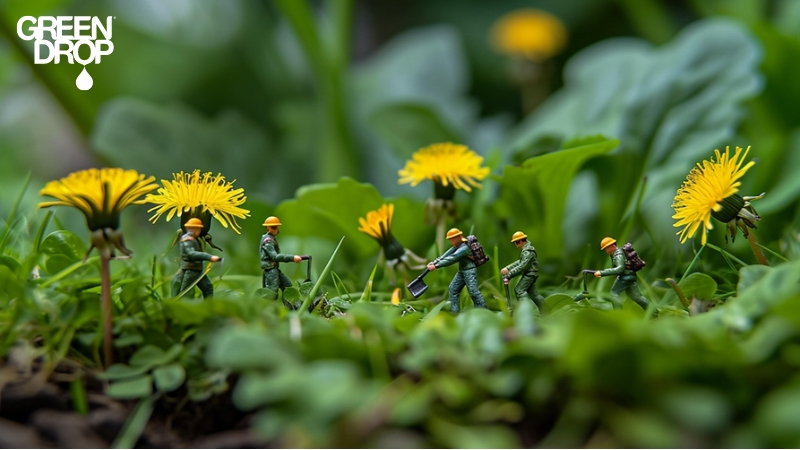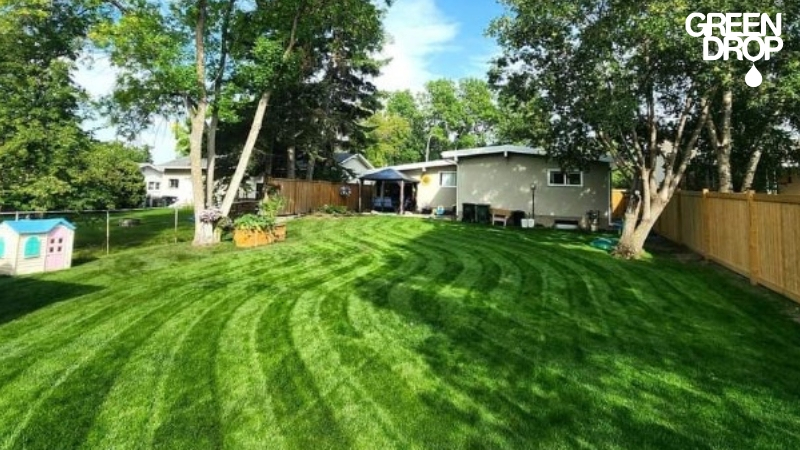In Focus: Edmonton's Program to Stop the Spread of Invasive Weeds
Reading time: 6 minutesWeeds are no fun. Some of them might look nice, but they can take over your lawn in a hot minute. Edmonton has implemented a helpful program to reduce the spread of invasive weeds in the city, and residents can help. Let’s explore how below.

Top 5 Weeds In Edmonton
What’s the difference between a weed and an invasive weed? We’re glad you asked. Invasive weeds aren't native to Western Canada and can damage crops, block waterways, and decrease biodiversity.
Here are a few of the weed varieties officials intend to target:
1. Perennial Sow Thistle
The perennial sow thistle looks a lot like the common dandelion with its polleny, bright yellow flowers, and stems that seep milky liquid when cut. These grow much taller than dandelions and often reach 2 metres in height. As a perennial weed that can reproduce by seed or creeping roots, sow thistle grows quickly and interferes with crops and livestock forage.
Currently, there are no biological controls that are effective for this plant. Regular mowing can help reduce seed production, but it can take a few years. Be careful with tilling since this can break up roots and encourage them to reproduce.
Did you know? Perennial sow thistle roots as small as 1 centimetre can grow into new plants.
2. Purple Loosestrife
Purple loosestrife is a vibrant, magenta-hued weed that likes to take up space in garden beds, creeks, and ponds. They can overtake these areas, potentially even disrupting waterways or blocking drainage reservoirs.
This plant's flowers can grow up to 25 mm wide and are clustered together in a tall spike. Once established, this species may be difficult to control. Unfortunately, they also can't be mowed or cut since this will spread the seeds and cause resprouting. Pulling plants by hand or using an approved herbicide are generally the most effective ways to control this vibrant but problematic weed.
More recently, root-mining weevils have been successfully used to defoliate purple loosestrife in a few locations and show promise as a future biological control.
Did you know? One purple loosestrife plant can produce more than 1 million seeds a year.
3. Garlic Mustard
Garlic mustard is a biennial plant with small clusters of white flowers and broad, triangle-shaped leaves. This weed gets its name from the garlic-like smell that young leaves produce when cut or crushed. The scent is created by a toxin that reduces wildlife habitats and plant diversity.
Fortunately, garlic mustard is easier to control than other weeds on this list and can be effectively mitigated with heavy tilling or mulching. Hand pulling and mowing are also helpful, but make sure to do this when the plant is still low to the ground to prevent new flowers.
Did you know? Garlic mustard was initially introduced to Western Canada around the mid-1800s as a medicinal plant and to help control soil erosion in susceptible areas.
4. Orange Hawkweed
Orange hawkweed is an invasive member of the daisy family with bright orange rosettes, hairy leaves, and seeds that look similar to a dandelion. This weed has the ability to lower the pH of the soil it lives in, which can be a problem for other plants in the same area.
A few herbicides are approved for getting rid of orange hawkweed, but you can also mow before the plant flowers to inhibit seed production. Because it’s hardy and can tolerate full sun to almost complete shade, it spreads pretty rapidly to other areas.
Did you know? Orange hawkweed can grow up to half a metre tall and has a milky sap like dandelions and perennial sow thistle.

5. Scentless Chamomile
Scentless chamomile invades open fields and roadsides, quickly out-competing native plants and producing massive amounts of seeds. Just one plant can take up an entire square metre and produce 1 million seeds. Like fragrant chamomile, this species has daisy-like white flowers with rectangular, notched petals.
Since this scentless chamomile only reproduces by seed, tilling can be an effective way to control new seedlings. Make sure you're cleaning equipment in between each till to remove seeds that may have become attached.
Did you know? At only 2mm long, this weed's seeds are incredibly tiny.
Runners Up
These weeds didn’t quite make our top 5, but they deserve an honourable mention:
- Blueweed – has purplish, bluebell-like flowers and stiff hairs
- Field bindweed – has pink or white morning glory-like flowers with bright green, vining leaves
- Pale yellow iris – lives along shorelines and has white or yellow flowers with the iris’ characteristic petals
- Oxeye daisy – has classic white petals with yellow centres and invades cattle pastures
Get to Know the City’s Spot, Report, and Remove Program
Edmonton is taking a proactive role in weed control and has developed an easy-to-follow Spot, Report, and Remove program that residents can use to help reduce the spread of invasive weeds in the city.
1. Spot It
Step 1: Identify the weed to determine if it’s invasive.
The Alberta Weed Control Act regulates invasive weed species that have the potential to cause environmental harm, so this is a great place to start when you need to identify a weed. Here, you can find a list of noxious and prohibited plants, along with information about what they look like, where they grow, and why they’re regulated.
Use the City of Edmonton’s Weed Identification Guide here.
2. Report It
Step 2: Tell the city about any invasive weeds you find.
Edmonton has an easy-to-use online reporting system that allows you to inform officials of controlled weeds in the community. You’ll need the location where you found the weed(s), a photo of the plant, a written description, and your contact information.
Click here to notify the city.
3. Remove It
Step 3: Dispose of invasive weeds properly.
Removing a regulated weed typically involves disposing of all growing parts, including flowers, leaves, stems, and roots. You can seal them in a garbage bag and throw them away along with your trash in your black cart. The city also hosts community weed pulling events, which you can join. Register here for the next event.
How to Stay Informed
Edmonton publishes an Integrated Pest Management Newsletter that can help you stay informed about news, weed-pulling events, and changes to city programs. You'll also get actionable information on pest management and environmental protection so you can play an active role in keeping our community green. Click here to sign up.

When to Leave Weed Control to the Trusted Experts
Don’t want to deal with the hassle of weed control? Or maybe you just want to make sure you’re removing weeds with safe products for kids, pets, and the environment. That’s where we come in.
At Green Drop, we specialize in weed removal service and other lawn care services in Edmonton, AB, so you never have to worry about invasive weeds encroaching on your beautiful landscaping. You can book us here.
We also serve Calgary, Red Deer, Regina, Saskatoon, Winnipeg, and surrounding areas throughout Western Canada.

